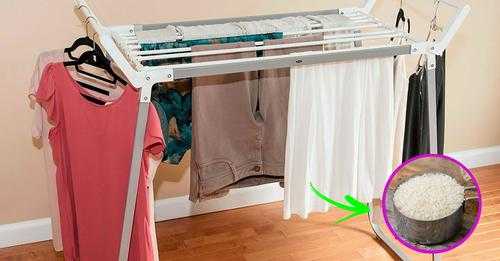ADVERTISEMENT
How to Dry Clothes Inside the House When It Rains Outside
Rainy days can be a real hassle, especially when you need to dry your clothes. Hanging laundry outside is no longer an option, and you may wonder how to handle your drying needs when the weather isn’t cooperating. Fortunately, drying clothes indoors during a rainy day is entirely possible with a few tricks and some simple adjustments to your routine. Whether you’re dealing with wet clothes after a wash or you just don’t want to wait for the weather to clear up, here are some effective methods to get your clothes dry inside the house.
1. Use a Drying Rack or Airer
A drying rack or clothes airer is one of the most efficient ways to dry your clothes indoors. These portable racks are a great solution, especially when you don’t want to overburden your dryer or you don’t have access to an outdoor space. Here’s how to use them effectively:
- Place in a Well-Ventilated Area: Find an area in your home with good airflow. Ideally, set up your drying rack near a window or fan to help the air circulate and speed up drying.
- Avoid Crowding: Hang clothes with enough space between them so air can flow freely. Overcrowding the rack can lead to longer drying times and may cause musty odors.
- Maximize Space: If you don’t have a lot of room, consider using collapsible drying racks or adjustable ones that can be expanded to fit more clothing when needed.
2. Use a Fan to Improve Air Circulation
If you don’t have access to a dryer, and the weather outside is too dreary, turning on a fan is an easy way to speed up the drying process. Here’s how you can do it:
- Position the Fan Strategically: Place the fan near the drying rack or clothesline to circulate the air around the clothes. Ensure the clothes aren’t too close to the fan to avoid damage.
- Use a Dehumidifier: If you live in a particularly humid environment, consider using a dehumidifier alongside the fan to reduce moisture in the air and help your clothes dry more quickly.
3. Use a Clothes Dryer or Tumble Dryer (If Available)
If you have an electric tumble dryer, it’s the most straightforward solution for drying clothes indoors. However, keep in mind that dryers can be energy-hungry, so it’s a good idea to use them efficiently:
- Select the Right Cycle: Choose the correct drying cycle based on the fabric type of your clothes. For delicates, use the low-heat setting to prevent damage, and for heavier items, increase the heat for faster drying.
- Dry in Batches: Avoid overloading the dryer as it will take longer for your clothes to dry. Instead, dry clothes in batches for more efficient results.
If you don’t have a clothes dryer, consider using a hairdryer for smaller, quick-drying items like socks or shirts. However, this method may take a bit of time and energy.
4. Use a Heated Clothes Dryer or Drying Cabinet
For a more advanced option, heated clothes dryers or drying cabinets are becoming increasingly popular. These are small, enclosed spaces designed to dry clothes quickly using gentle heat. Here’s why you should consider this option:
- Compact and Efficient: Heated clothes dryers are ideal for smaller spaces and can dry clothes faster than air drying without the need for a vent or direct heat source.
- Safe for Delicates: These dryers are often gentler on fabrics than traditional dryers, making them a good choice for delicate clothing that could be damaged by a standard tumble dryer.
If you’re in the market for one, look for a drying cabine
